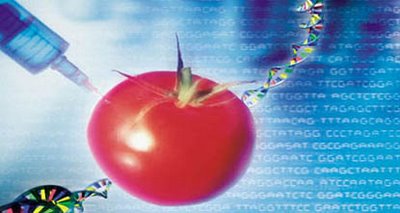What are Genetically Modified or GM Foods?

Genetically modified foods (GM foods) have ingredients in them that have been modified by a technique called gene technology.
This technology allows food producers to alter certain characteristics of a food crop by introducing genetic material and proteins from another source.
WHAT IS GENETIC ENGINEERING?
The process of genetic engineering is known by many different names such as gene, or DNA manipulation, gene splicing, transgenics and many others. However the underlying processes all have the same aim and that is:
"To isolate single genes of a known function from one organism and transfer a copy of that gene to a new host to introduce a desirable characteristic"
The structure of every living thing is determined by its genes. A gene is a chemical code which contains an instruction for the body to express a particular attribute such as eye colour, skin pigment or height. Each gene is made up of a segment of DNA (deoxyribonucleic acid).
Scientists are able to extract DNA from any organism and can then isolate a specific gene through the use of restriction endonucleases, which cut DNA strands at specific points. The gene is then copied billions fold in readiness for transfer to another organism.
NB: Many good illustrations and a full explanation of this and methods of genetic engineering can be found in the reference "Gene Technology" by Sue Jarvis and John Hickford.
METHODS OF GENE TRANSFER
There are four primary methods of introducing an isolated gene into the host. These are:
-
Injection.
This is used primarily in animals. The new DNA is injected with a very small sharp needle into the nucleus of a single cell. This cell is usually a fertilised egg which can then be placed back in the female uterus where the injected cell is allowed to develop normally.
Unfortunately there is a high rate of failure when using this technique as cells infrequently take up and express the desired traits of the introduced DNA.
-
Biolistics.
Biolistics is used in the genetic modification of plants and involves shooting new genes into the potential host. Microscopic particles of gold or titanium are coated in the DNA sections which are to be introduced to the host. These are loaded into cartridges, similar to shotgun cartridges, which are then fired at the plant cells. The process relies on some of the microscopic particles entering this cell nuclei and their DNA coating combining with the plant chromosomes.
-
Vectors.
This method has the potential to be used in both plant and animal situations. It involves a bacteria or virus carrying a new gene into a cell. Using a modification of what is already happening in nature.
Example:
Common vectors in gene transfer between plants are Agrobacterium tumefaciens and Agrobacterium rhizogenes. These bacteria are usually found in the soil and if they infect plants will respectively cause galls or hairy roots through introducing some of their own DNA into the plant. The Agrobacterium transfer the DNA as a plasmid, a small circular piece of DNA, which is separate to the main bacterial chromosome. Genetic engineering makes use of this natural transfer of DNA through replacing a section of the bacteria’s own DNA with a gene which scientists would like to introduce to a new host.
-
Protoplast transformation.
This is also commonly used in plants. The cellulose in the plant wall is dissolved away using enzymes leaving a protoplast. DNA can then be added to the protoplast which are then cultured on a growth media. This encourages the protoplast to regrow cell walls and eventually grow into a transgenic plant.
Disclaimer


